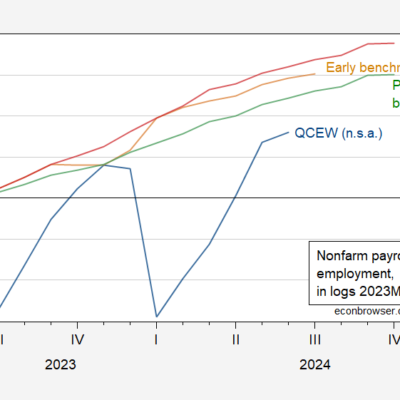
Abercrombie & Fitch is “no longer a jeans and T-shirt brand,” CEO Fran Horowitz boasted on Wednesday’s fourth-quarter earnings call. The apparel retailer soared on a 21% increase in 2023 sales of $1.45 billion—up from $1.2 billion the year before—but tepid sales growth predictions for 2024 have halted its skyrocketing stock. Following the earnings report, shares fell 9.7% in Abercrombie’s worst week since August 2022.
The retailer expects net sales growth from 4% to 6% for fiscal 2024, in line with estimates but lower than last year. Concerns over Abercrombie’s ability to sustain revenue growth have caused shares to sink, Bloomberg reported.
Morgan Stanley analyst Alex Straton said in a March 7 note that Abercrombie’s profitability expectations could be too optimistic. Fashion brands, which rely on cyclical seasons and trends, are vulnerable to missteps, should they miss the mark on product rollout.
“The risk-reward skews to the downside from current levels… We caution current growth and profitability levels could be difficult to maintain heading into [the second half of the year],” she said.
Abercrombie reached high highs in 2023, with its performance landing it at the top of the S&P 1500 Index. It gained 285%, higher than AI darling Nvidia’s 239% surge. The retailer owes its sales success to revamping its inventory to appeal to younger shoppers, as well as customers who don’t mind inflation-induced higher prices.
Horowitz said the company intends to continue to lean on its expanding audience of both older Gen Zers and young millennials for future growth.
“The addressable market has gone from customers in their early twenties to late thirties, and we’ve broadened all the offerings from a category perspective,” Horowitz said. Abercrombie has launched both special occasion, casual, and activewear lines to dress young people for their weekend endeavors.
Young generations have a strong interest in clothing with 87% of Gen Z, as well as 82% of millennials, planning to buy fashion items over the next six months, according to a February UNiDays survey of over 5,000 UK students. While Gen Z is cost-conscious and thrifty, they also don’t mind splurging a little extra on luxury goods. Gen Z and millennials are the generations most likely to make splurge purchases, including pricier fashion items. A June 2023 Harris Poll of over 2000 U.S. adults found that 75% of Gen Z and 68% of millennials made splurge purchases last year.
But even young fashion enthusiasts may not be able to reverse the trends of uncertainty in the fashion industry. McKinsey & Company’s State of Fashion 2024 report predicts a 2% to 4% “slower but normalized” growth in the industry as a result of inflation and lack of consumer confidence. The Bureau of Labor Statistics noted a 0.6% uptick this month in CPI for urban consumers in apparel.
The fashion industry may have an uncertain future, but Abercrombie has built back from hardships in the past. A decade ago, the company was struggling to remain relevant and liked.
How Abercrombie reclaimed the hearts—and wallets—of millennials
Only eight years before being the highest-performing stock, Abercrombie earned the 2016 superlative of most hated retailer. Previously the company leaned on the appeal of low-rise jeans and hypersexualized models, but its image soured after a slate of controversies, including a class-action racial discrimination lawsuit and comments by former CEO Mike Jeffries calling the retailer “exclusionary” in a 2006 interview.
Horowitz, who became Abercrombie’s CEO in 2017, actively worked to change the company’s cliquey reputation perpetuated by her predecessor.
“We are a positive, inclusive brand, with a nice sensibility, very different from what they encountered in the past,” Horowitz said in 2016.
By 2019, Abercrombie had completely overhauled its inventory and expanded its sizes. Stores ditched the loud music and thick clouds of perfume. In a bid to separate itself from sister brand Hollister, it moved away from dressing teens in favor of pursuing young graduates and adults entering the workforce.
The strategy worked. In November 2022, the company posted an expectation-exceeding profit, even in the aftershocks of the pandemic and high inflation. Over the past five years, it has more than tripled its market capitalization, which grew from $1.83 billion in March 2019 to nearly $6 billion.
“We grew up Abercrombie,” Horowitz said in a 2022 Fortune interview. “We really focused on this young millennial, this young, mid-twenties consumer, and we got the response that we were hoping for.”




